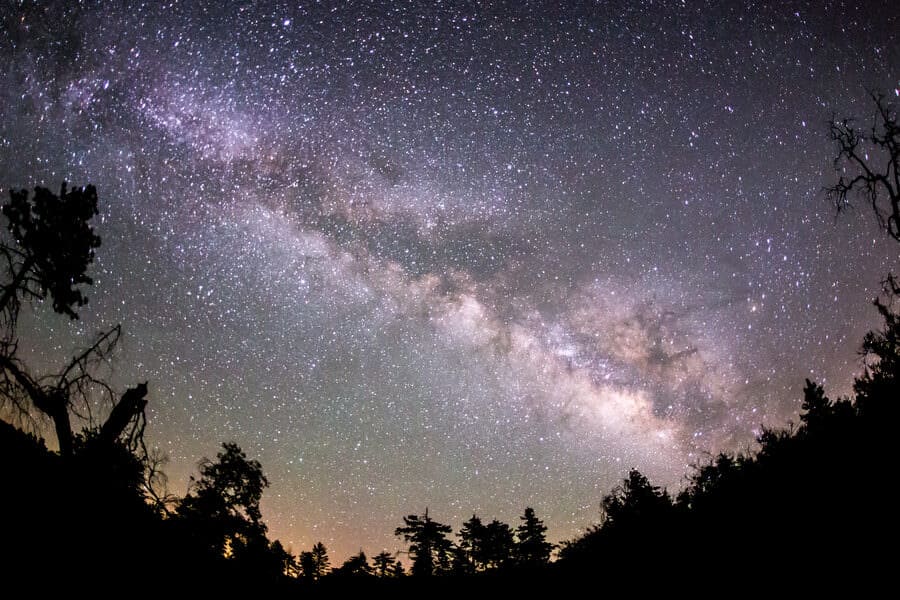
The question of how many stars there are in the sky cannot be answered by even experienced astronomers. However, there is an approximate number that is known.
How many stars can the human eye detect?
Scientists, on the other hand, have an exact answer to this question.
In a large city like Moscow, a person can see only 150-200 stars with the naked eye, assuming that the weather is clear.
Why are there so few stars visible in the night sky? The reality is that in large cities, the night sky is often illuminated by various light sources, resulting in a dull gray appearance rather than a deep black. Against this backdrop, only the brightest stars, known as navigational stars, are able to stand out. However, there are not many of these stars to begin with. During a time when navigation was more challenging, such stars were relied upon by ships and airplanes to determine directions.
However, when you venture outside of the city and into open spaces, you can witness the beauty of up to one and a half thousand stars! The human eye can potentially spot up to six thousand stars, although this is only achievable in certain conditions, such as in the high desert near the equator when the Earth undergoes a half turn.
Brightness of Stars
Stars can be classified into six different classes based on their brightness. The most luminous stars belong to the first magnitude, followed by slightly dimmer stars in the second magnitude, and so on. In the mountains, individuals with exceptional vision can even spot stars as faint as the eighth magnitude! Surprisingly, there are not just six thousand stars, but rather several tens of thousands. However, only a handful of them are visible to the naked eye.
Counting the precise number of stars in the sky is crucial to prevent space dust from obstructing our view of the stars, even with the most advanced equipment.
However, scientists have estimated that there are approximately 100 to 400 billion stars in our galaxy alone. And our galaxy is not the only one out there. In fact, around 100 billion galaxies have been discovered!
If we multiply the number of stars in one galaxy, which is about 100 billion, by the number of galaxies, we end up with a staggering 10 to the power of 22 stars. And that’s just the minimum estimate!
The night sky is a captivating sight, filled with stars and dazzling constellations. It’s hard not to wonder how many stars are up there. I can’t help but imagine if there’s anyone who, while gazing at the night sky with a mix of delight and inexplicable awe, hasn’t pondered this very question. Perhaps many have even attempted to count them all.
A brief history
Have you ever wondered who was the first person to disclose the exact number of stars in the sky? And how long ago did this happen?
Around 2500 years ago, the ancient astronomer Hipparchus created the initial star catalog. What inspired the scientist to label the stars? It was likely a remarkable event he witnessed – the emergence of a new, remarkably bright star. As an astronomer, this momentous occurrence surely left a lasting impression on him. In order to not miss any future appearances of such celestial bodies, Hipparchus decided to document all the visible stars. Ultimately, he recorded the details of 1025 stars, including their coordinates and magnitude.
Undoubtedly, the process of observing celestial objects commenced well before the time period mentioned above. The astronomers of ancient times also contributed their own works to the field, however, regrettably, only fragments of their writings have managed to survive. As a consequence, the initial compilation of stars is credited to the efforts of Hipparchus. He categorized all the stars into six distinct groups, with the primary criterion for classification being their brightness. This is when the term “stellar magnitude” was first coined and introduced. Naturally, over time, the concept of magnitude devised by Hipparchus underwent modifications and enhancements.
About stellar magnitudes
In ancient times, there was a belief that the celestial luminaries resided in the same sphere and were equidistant from the Earth. The stars that appeared faint and barely detectable were given a designation of sixth magnitude, whereas the most brilliant stars were assigned the first magnitude. Hipparchus compiled a catalog where fifteen stars held the highest importance, forty-five stars were of the second importance, two hundred and eight stars were of the third importance, four hundred and seventy-four stars were of the fourth importance, two hundred and seventeen stars were of the fifth importance, and forty-nine stars (as well as a few nebulae) were of the sixth importance.
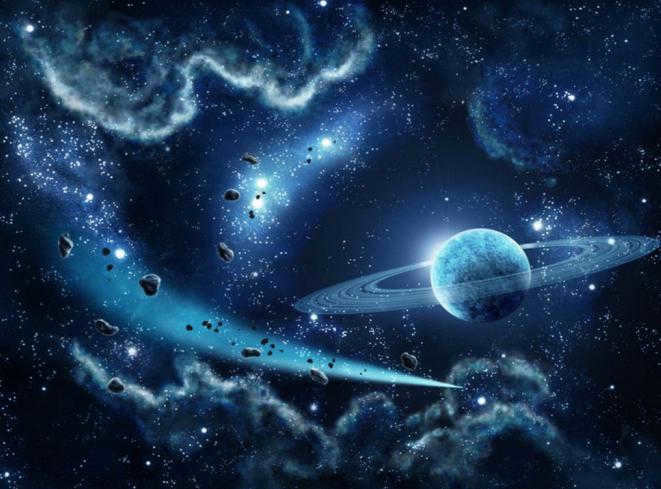
As time passed, astronomers made new discoveries, gained valuable experience, and acquired a wealth of knowledge. They soon realized that stars emit radiation in an uneven manner and are located at various distances from each other. This led to the development of new definitions for their magnitude, including visual, photovisual, photographic, and bolometric measurements.
Counting together
Undoubtedly, even the most authoritative modern astrologer cannot answer the question of how many stars are in the sky. And it is easy to understand why. How can we not agree with the ancient sages who claim that counting the stars is as challenging as counting the grains of sand on Earth! Nevertheless, we can attempt to provide a rough estimation.
What do we require in order to calculate the number of grains of sand? We need data regarding the coastline’s area (which can be obtained from a satellite) and the average thickness of the sand layer. This will assist us in determining the volume of all the sand on the planet (V-z). Now, all that remains is to measure one grain of sand (V-p). Do you follow? To obtain an approximate count of grains of sand, the only thing left to do is to divide V-z by V-p. Naturally, the figure will be “rough”, but it’s still something.
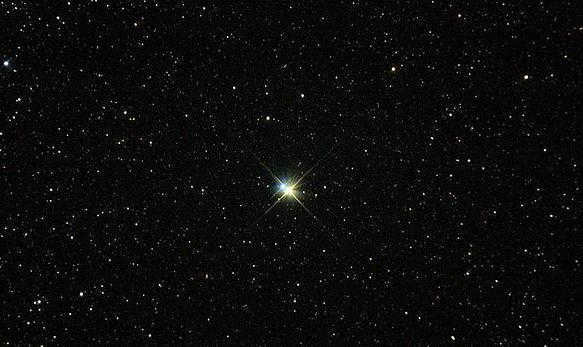
Using the same method, we can make a rough estimation of the total number of stars in the sky. The concept is similar, but instead of beaches, we consider galaxies. Let’s crunch the numbers. Our galaxy, the Milky Way, contains approximately 10 to 12 stars. So how many stars are there in the entire universe? We’ll let you figure that out, but here’s a little clue: there are roughly the same number of galaxies – 10 to the power of 12.
It’s as simple as multiplying.
Stars in the Celestial Sphere
Since ancient times, humans have been giving names to the most prominent celestial objects. These include Sirius, Vega, Aldebaran, Antares, and many others. Stars with slightly lower brightness were designated using Greek alphabet letters and numbers. Some of them were not even assigned a number, but were simply marked on maps with their coordinates and luminosity.
In the vastness of the universe, the blue UW Sma is known as a blue UW star. In terms of visibility in the night sky, Deneb takes the lead, followed by the closest star to us, Sirius, and the planet Venus within our Solar System.
About two thousand years ago, in an attempt to categorize the diverse array of stars in the sky, scientists introduced a classification system based on their brightness, dividing them into six groups. These groups consist of stars that are visible to the naked eye.
The larger the stellar magnitude, the dimmer the star appears. This classification of stars based on their brightness is not surprising, just like how the largest fruits belong to one variety and the smaller ones belong to another variety.
Stars of the sixth magnitude shine a hundred times fainter compared to stars of the first magnitude. Stars of the seventh and eighth magnitude, which can be seen with binoculars, are two and a half and six times fainter, respectively.
If you carefully observe the starry sky and use a star map to locate constellations, you will quickly learn how to navigate the sky and keep track of all the stars visible to the naked eye.
There are approximately 6,000 stars of this kind in total, and only up to 3,000 can be seen just above the horizon. The use of the term “approximately” is necessary due to variations in visual acuity and air transparency.
When using an average pair of binoculars, the number of visible stars increases to around 10,000. On photographic plates obtained with long exposures using the most advanced telescopes, the number of stars in the entire hemisphere reaches two or three billion. However, the majority of these stars are not discernible, and only the brightest ones can be distinguished in photographs.
If we were to mentally divide the celestial sphere into squares, each with an area equal to the disk of the full Moon as seen from Earth (200,000 squares), then each of these squares would reveal 10,000 visible stars if observed through a super-powerful telescope.
Undoubtedly, the vastness of this variety is nearly imperceptible to the naked eye – the stars beyond the 6th magnitude are indiscernible without the aid of a telescope. However, as the brightness of stars diminishes, their quantity expands. This signifies that the nocturnal expanse conceals far more than it unveils!
The rosters of star inventories encompass not solely the entirety of stars discernible to the unaided eye, but also numerous feeble ones.
All stars surpassing the eleventh magnitude have been tallied and chronicled within catalogs and maps. We possess some knowledge regarding the number of fainter stars, albeit not as precisely, though the precision is of lesser significance.
Consequently, the determination of the quantity of stars that are more luminous than a specified limiting magnitude can be illustrated through the subsequent table (The information is outdated, currently there is an increased number of stars of all stellar magnitudes specified in the table. Nevertheless, the ratios of stellar magnitude/number of stars remain unchanged and effectively exhibit the overall pattern) :
| Maximum brightness of stars | Number of stars |
| 6.0 | 4,860 |
| 7.0 | 14,300 |
| 8.0 | 41,000 |
| 9.0 | 117,000 |
| 10.0 | 324,000 |
| 11.0 | 870,000 |
| 13.0 | 5,700,000 |
| 15.0 | 32,000,000 |
| 17.0 | 160,000,000 |
| 19.0 | 560,000,000 |
| 21.0 | 2,000,000,000 |
To make a comparison, I will provide a comparative chart of stellar magnitudes that includes details about all notable celestial entities visible from our planet.
| Sun (as seen from Earth) | −26.7 |
| Sun (as seen from Pluto) | −18.2 |
| Moon (when full) | −12.74 |
| Supernova of 1054 | −6.0 |
| Venus (at maximum brightness) | −4.67 |
| Jupiter (at maximum brightness) | −2.94 |
| Mars (at maximum brightness) | −2.91 |
| Mercury (at maximum brightness) | −2.45 |
| Saturn (at maximum brilliance) | −0.24 |
| Stars of the Big Dipper | +2 |
| Andromeda Galaxy | +3.44 |
| Jupiter’s moons | +5-6 |
| Uranus | +5.5 |
| The faintest stars visible with the naked eye | +6 to +7.72 |
| Neptune | +7.8 |
| Proxima Centauri | +11.1 |
| Brightest quasar | +12.6 |
| Faintest object observed with an 8-meter ground-based telescope | +27 |
| The faintest object observed by the Hubble Space Telescope | +31.5 |
Optical devices that reduce the distance to the stars – binoculars, amateur and high-powered professional telescopes – unveil an unending sequence of celestial entities. To the unaided eye, away from the glare of urban centers, approximately two thousand stars become visible. This represents one third of the overall count that can be observed in both hemispheres of the globe. Stars from the opposite hemisphere and those situated near the horizon – where the atmospheric clarity diminishes – remain hidden from view.
Stars with Individual Names
The most brilliant and largest stars possess unique names, bestowed upon them by various nations around the globe. Approximately 300 of these stars still retain their names, which originate from a multitude of languages including Sumerian, Akkadian, Coptic, Semitic, Greek, Roman, and, naturally, Arabic. However, when depicted on star charts, these celestial bodies are identified by letters from the Greek alphabet, with their designation corresponding to their position in the alphabet—stars with lower brightness are assigned letters further down the alphabet.
For instance, the star Deneb, meaning “tail” in Arabic, serves as the “alpha” star of the Swan constellation. There are several other stars bearing the name Deneb, each associated with different constellations such as the Whale (Deneb Kaitos), Leo (Denebola), Scorpius (Deneb Aqrab), Dolphin, and Eagle.
There are approximately twenty-four celestial bodies that have been given names by the astronomers who first discovered or described them. Some examples include Barnard’s flying star, located in the constellation Serpentor, and Kapteyn’s star, found in the constellation Painter. These stars are not visible to the naked eye and were only discovered with the help of powerful optical instruments. Herschel’s garnet star, on the other hand, can be observed in the Northern Hemisphere. In addition to these named stars, there are also mentions of astronomers such as Van Maanen, Krzeminski, Przybylski, Popper, Leuthen, and Teegarden, who have described other celestial bodies. However, it should be noted that this particular mention is unofficial. It is interesting to consider how many discoverers in other scientific fields possess the same level of modesty.
The ingenious entrepreneurs behind companies that provide the opportunity to name a star in tribute to someone willing to make a financial contribution, skillfully generate profits seemingly out of nowhere. There will be no record of the star’s name in the official star atlases, ensuring that only two parties hold knowledge of the star-naming certificate – the individual who made the payment and the recipient of said payment.
After approximately 6,000 stars that can be seen with the naked eye, there are other objects that can be distinguished through binoculars. At this level of magnification, the number of stars increases to 200,000. According to the system of stellar magnitudes developed by the ancient Greek astronomer Hipparchus of Nicaea and later refined, these stars fall into the 9-10 magnitude range.
Stars in the 11-12 magnitude range can be observed with a modest amateur telescope, and their number increases to 2 million. With a powerful telescope, objects up to the 15-16 magnitude range can be observed, increasing the number of stars by over 100 million.
It is estimated that there are billions of stars up to the 20th magnitude. However, not all of them are always visible due to being periodically obscured by clouds of cosmic dust. The exact number of stars at even greater distances can only be approximated.
The Atacama Desert in Chile is home to the most powerful telescope on Earth, known as the Very Large Telescope (VLT). Comprised of four main and four auxiliary optical telescopes, this complex is a marvel of modern technology.
When night falls and the cities’ bright lights fade away, the sky above the Atacama Desert presents a breathtaking spectacle. Countless stars twinkle in constellations and the Milky Way, creating a mesmerizing display. Attempting to count these stars by hand would be a daunting task, as their numbers range from millions to billions. However, astronomers dedicate themselves to this endeavor. Today, we will explore the quest to determine the precise number of stars in the sky.
Stars that can be seen with the naked eye
We often hear that there are trillions of stars in the universe. However, not all of them are visible to the human eye. This is because the brightness of a star affects its visibility – dim stars that are closer may appear brighter than very powerful stars that are far away. The lower the stellar magnitude, the more visible the star is to the human eye. However, there is a limit to this visibility, and even the most observant person may not be able to recognize a star beyond a certain point. This limit is typically set at a stellar magnitude of +7. The specific magnitude may vary slightly depending on a person’s visual acuity and the darkness of the sky.
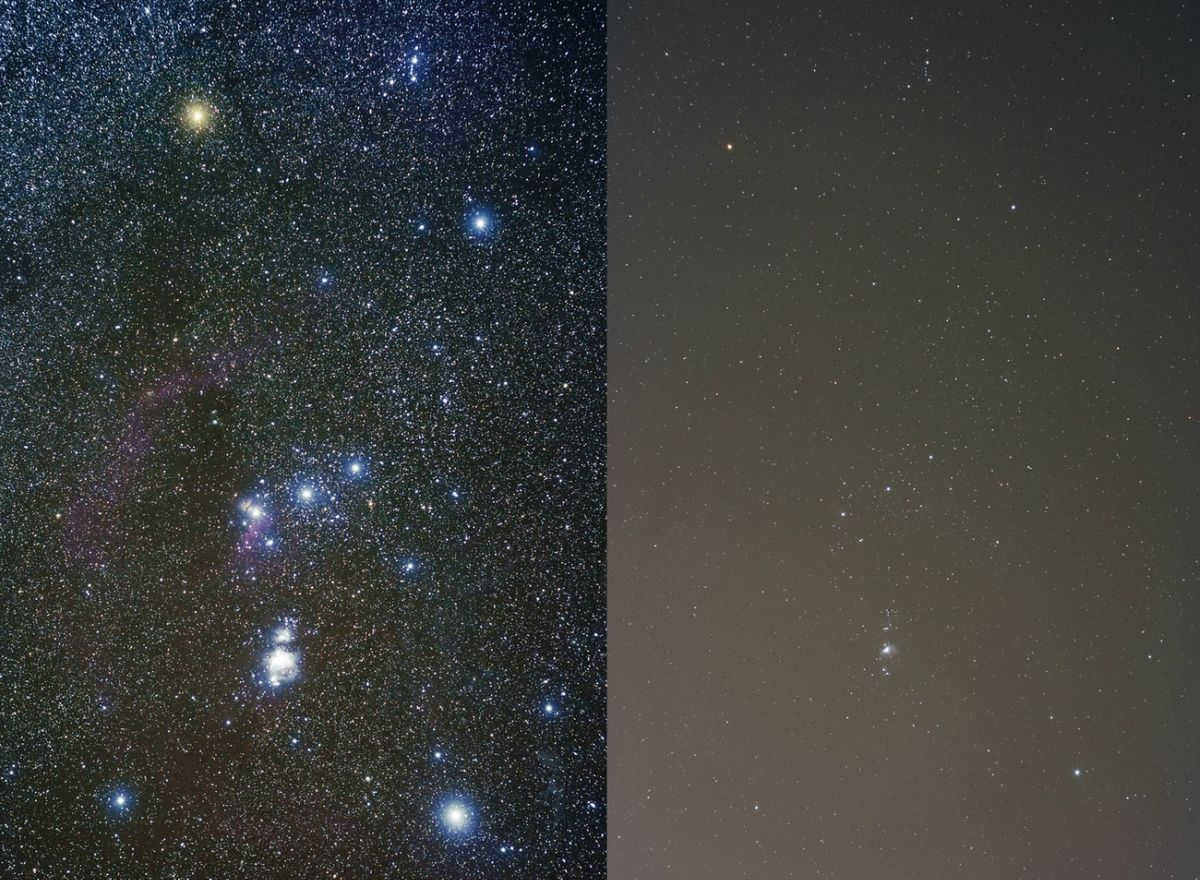
Consequently, from the vast multitude of stars that can be observed in the celestial sphere… only around 6000! However, this is just an approximate estimation. As we are aware, the sky is divided into two hemispheres, with each hemisphere revealing up to 3000 stars. Additionally, some stars are positioned close to the horizon, making it challenging to perceive them as they are obscured by the dense atmosphere. Furthermore, one must also account for the reality that there is no perfectly flat horizon. The horizon is constantly disrupted by trees, buildings, hills, and other landscape irregularities, which reduces the number of stars visible at any given time to approximately 2500.
- However, even under ideal observing conditions – meaning a dark, moonless night – this number is still available.
- During the summer months, the sky tends to be brighter around the edges compared to winter. Additionally, the presence of city streetlights creates a backlight effect.
- In the heart of a bustling city, the number of visible stars in the sky decreases significantly to only 200-300 at a time.
- Therefore, the optimal view of the stars can only be enjoyed during the winter season and from a distance of more than 5 kilometers away from any populated area or illuminated road.

Countless Stars in the Sky: Observing Stars through a Telescope
Nevertheless, humanity has long discovered a method to overcome the limitations of its own eyesight. Numerous advanced telescopes, both terrestrial and extraterrestrial, continually expand the visible frontiers of the universe, uncovering novel constellations and galaxies. Even an ordinary pair of binoculars offers the opportunity to witness an additional 200,000 stars. Furthermore, more affordable options unveil ten times as many celestial bodies!
Undoubtedly, the entirety of the stars in the Cosmos eludes our sight. The nucleus of our galaxy acts as an impassable obstruction obscuring a portion of the Milky Way, and clusters of interstellar particles absorb all wavelengths except for infrared. While astronomers strive to overcome these hurdles – such as the development of telescopes capable of penetrating previously deemed insurmountable barriers – the limits of the Universe persist. At least in terms of visibility – our gaze can extend no further than 45.7 billion light-years.
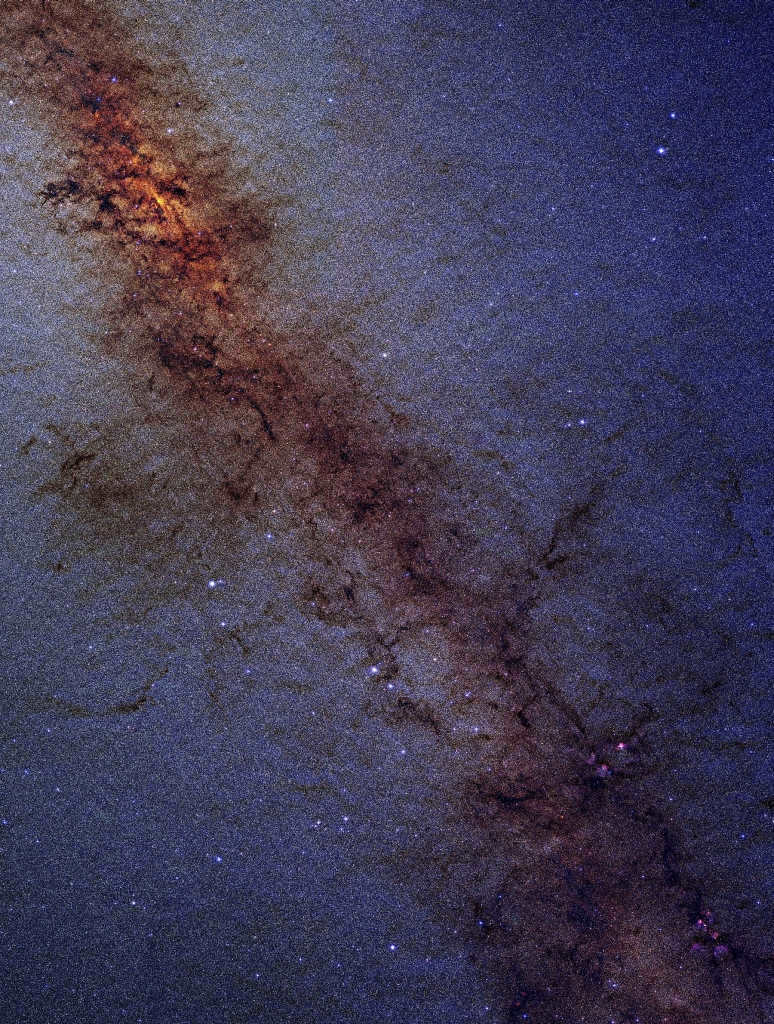
Let’s summarize the final count. The total number of stars in our galaxy is estimated to be between 100 and 400 billion. The telescope has discovered approximately 100 billion galaxies, and it is expected that another 100 billion will be found in the near future. Our galaxy is considered to be an average-sized galaxy in terms of the number of stars it contains, as there are both larger and smaller galaxies out there.
Now, let’s utilize the known figures and calculate the number of stars in the sky together. With 100 billion galaxies, each having 100-400 billion stars, if we multiply 10^11 by 10^11, we get a total of 10^22 stars, which is equivalent to 1,000,000,000,000,000,000,000,000,000,000,000,000,000 stars in the sky. And this is just a conservative estimate! If there are more galaxies or stars, the number increases exponentially.
The Hubble orbiting telescope has provided groundbreaking data that allows us to make the first estimation of the number of stars in the vast expanse of the Universe.
With the Hipparcos mission, we have already recorded millions of stars within our own galaxy, indicating that the number of stars in the Universe is beyond comprehension.
Despite numerous delays, the new Herschel telescope is set to revolutionize our understanding of the Universe by capturing the infrared radiation of the most distant stars. Its launch is now scheduled for spring 2009.
When we venture away from the bright lights of the city and look up into the night sky on a clear, dark night, we are met with a mesmerizing display of countless stars. However, it is important to note that only a fraction of these stars are visible to the naked eye. By utilizing even the simplest amateur telescope, we can expand our view and witness a staggering increase in the number of stars.
With the advancement of modern technology, scientists are constantly uncovering new and distant galaxies that are teeming with an abundance of stars. This endless exploration seems to suggest that the universe is boundless in its vastness. However, the exact number of galaxies in existence remains a perplexing question that even experts find difficult to answer. Let us attempt to unravel this mystery.
It is important to note that stars are not randomly scattered throughout the universe, but rather, they are organized into immense clusters known as galaxies. For instance, our very own Sun resides within the Milky Way galaxy, which alone boasts a staggering 100 billion stars. Yet, astonishingly, there are trillions of galaxies scattered across the universe!
An ancient philosopher once remarked that attempting to count the stars is akin to tallying up all the grains of sand scattered along every coastline on Earth. However, if we are not concerned with an exact number but rather a rough estimate, we can turn to satellite imagery to determine the total area of a suitable shoreline, ascertain the average thickness of the sand layer, and then divide the total volume of all the sand on Earth by the average volume of a single grain. While arriving at a rough figure may prove challenging, it is indeed possible.
Turning our attention back to the celestial realm, galaxies can serve as the equivalent of these “beaches” for us. It is generally accepted that our own galaxy contains between 1011 and 1012 stars, and there are believed to be between 1011 and 1012 galaxies in the entire universe. A simple calculation reveals that there should be between 1022 and 1024 stars in the universe.
This is, undoubtedly, an approximate estimate, assuming that our galaxy is fairly typical, with minimal deviations from the norm, and that we have accurately calculated the total number of galaxies in the Universe. However, this estimation can be quite deceiving, as for a long time it was believed that there were around 50 billion galaxies, until the Hubble Space Telescope’s research nearly doubled that number!
Furthermore, even the Hubble Telescope is unable to capture all of them. Excluding extremely distant or dim galaxies, many remain invisible to optical telescopes due to the obstruction caused by dense clouds of gas and dust, which are often present during the active process of star formation. However, the upcoming launch of the Herschel infrared probe this spring promises to offer a glimpse into these distant depths (for more details on its operation, refer to our article “Eyeball”).
It is worth considering that nobody has ever made an actual attempt to compute the quantity of stars present in the galaxy: typically, a generalized characteristic is measured, specifically the luminosity of the galaxy. Subsequently, we can approximately divide the luminosity of a particular galaxy by the average luminosity of a star at the corresponding distance – and make an estimation of the number of stars within it. This is essentially how Herschel will operate, “counting” galaxies and assessing their luminosity in the infrared spectrum.

With the naked eye, approximately 5,000 stars can be observed simultaneously in both the Northern and Southern hemispheres. However, it is not possible for an individual to observe all of them at once, as only about half of this number is visible above the horizon at any given time. Due to the decreased transparency of the atmosphere near the horizon, the observer will see around 1.5-2 thousand stars instead of 2.5 thousand.
In urban areas, only a few of the brightest stars may be distinguishable due to imperfect street lighting and excessive night illumination. Overall, estimates suggest that there are between 200 billion and one trillion stars in the Galaxy.

Top 5 recommended books
© 2019 Argumenty i Fakty in Belarus LLC. Leading the team is Igor Nikolayevich Sokolov as the director and editor-in-chief. Assisting him are Evgeny Yuryevich Oleinik and Julia Vladimirovna Teltevskaya, the deputy editors-in-chief. Overseeing the aif.by website is Vladimir Sharpilo, the editor-in-chief. All rights reserved. Reproduction and usage of the entire material is strictly prohibited, but partial citation is allowed with a hyperlink to www.aif.by. To reach the editorial office, please dial +375 29 642 67 51.
The Ministry of Information of the Republic of Belarus has issued Certificate No. 1040 on 14.01.2010.
Commenting Guidelines
Follow these straightforward guidelines to enhance your experience while communicating on our platform!
In order to ensure a pleasant visit to our website, we kindly ask you to adhere to the following rules for commenting:
Comments should not exceed 2,500 characters (including spaces).
The primary language of communication on the AiF website is Russian. However, if you are confident that readers will understand you correctly, you may use other languages in the discussion.
Comments containing profanity, insults, or instigations of interethnic discord are strictly prohibited.
Spam and advertisements promoting goods, services, or events that are unrelated to the article’s context are not allowed.
Unrelated messages to the article’s content or discussion context are not appreciated.
Let’s show respect towards each other and the platform where readers gather to communicate and share their thoughts. The platform administrators have the right to remove comments or parts of comments that do not meet these requirements.
The editorial team reserves the right to publish specific comments in the print version of the publication or as a separate article on www.aif.ru.
If you have any questions or suggestions, please send a message to the site administration.
Indeed, the Moon is also considered a celestial object! To put it differently, the “stellar measurements” have transitioned from being purely “stellar” to encompassing the vastness of the cosmos.
What is the number of stars that can be seen in the sky without using binoculars or a telescope?
Around two thousand years ago, scientists created a system to categorize the different stars in the sky based on their brightness. This classification divided the stars into six groups, each with six sizes. At that time, this classification covered all the stars visible to the naked eye.
The Greek astronomer Hipparchus, who lived in the second century BC, introduced the term “size” to describe the stars. This term remained in use until the 20th century when a more accurate unit of measurement was established based on visual observation.
A total of approximately 20 brilliant stars were referred to as stars of the first magnitude, while stars of lesser brightness were known as stars of the second magnitude, and those that were barely discernible were classified as stars of the sixth magnitude. The average limit of visibility for the human eye is around 6.5 meters (m from Magnitudo, meaning “size”).
The larger the star, the fainter it appears to be. The distribution of brightness among these stars is not surprising. It is to be expected that the largest fruits would rank first in the initial column. In comparison to stars of the first magnitude, stars of the sixth magnitude are 100 times dimmer. However, stars of the seventh and eighth magnitudes, when viewed through binoculars, are 2.5 times dimmer.
We have already learned how to identify individual stars in the sky. Now it is time to learn how to arrange them! Read more about it.
Most brilliant stars visible from Earth with the unaided eye
What is the count of visible stars with naked eye?
Take a close look at the starry sky and utilize a star chart to locate the constellations. Then witness how effortlessly one can gaze up at the sky and observe all the stars that are visible without the aid of any optical device.
There are approximately 6,000 such stars in total, with fewer than 3,000 directly above the horizon. If we were to describe them as “abundant,” it would be in relation to the varying degrees of visual acuity and air transparency.
In the central region, the number of visible stars increases to around 10,000, but on the distant photographic plates captured by the most powerful telescopes, the count of stars in the celestial hemisphere ranges between 2 and 3 billion. The majority of them belong to our own galaxy, and only the brightest stars in far-off galaxies can be distinguished in photographs.
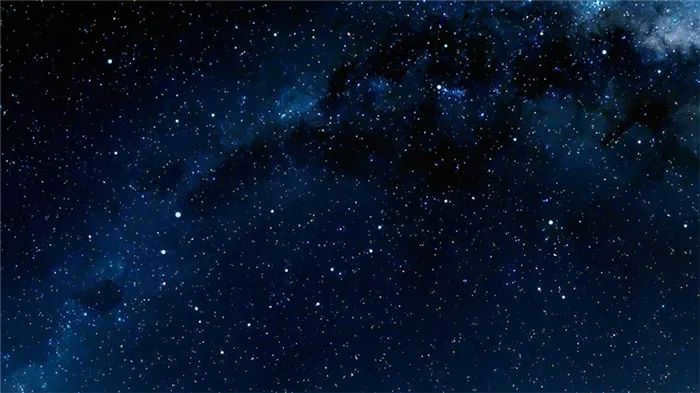
Residing in urban areas, we are effectively stripped of an authentic star-filled sky.
If we mentally divide the sky into squares, each equal in size to an album of the full moon visible from Earth (approximately 200,000 squares), a powerful telescope can reveal 10,000 stars within each square.
Naturally, it is impossible to observe this entire array – stars larger than six are not visible without a telescope – but by reducing the brightness of the stars, their quantity increases. Consequently, the night sky is much more concealed than we realize!
Not only are the stars in the stellar catalogue visible to the naked eye, but many are also faint.
All stars with a magnitude brighter than 11 are documented and plotted. The count of faint colors is also available, although not as precise. However, the accuracy of this information is not of great significance.
The final computations of stars exceeding a specific magnitude threshold can be condensed into the subsequent table (please note that the data provided is outdated and the precise count of stars within each size class is now known. Nevertheless, the correlation between stellar magnitude and the number of stars remains constant, effectively demonstrating a general pattern):.
| Magnitude limit of stars | Number of stars |
| 6.0 | 4,860 |
| 7.0 | 14,300 |
| 8.0 | 41,000 |
| 9.0 | 117,000 |
| 10.0 | 324,000 |
| 11.0 | 870,000 |
| 13.0 | 5,700,000 |
| 15.0 | 32,000,000 |
| 17.0 | 160,000,000 |
| 19.0 | 560,000,000 |
| 21.0 | 2,000,000,000 |
Visible stellar magnitude and absolute stellar magnitude
When discussing the dimensions of stars, there are two closely related but distinct concepts that are sometimes confused. Stellar magnitudes can be either absolute (represented by m) or apparent (represented by m).
Apparent magnitude refers to the “true” size of a star, in the sense that it is perceived by an observer on Earth. The actual size, distance, etc. of the star are not relevant – what matters is how brightly the star appears in the sky. For instance, the apparent magnitude of the Sun (which is not a particularly large star) is -26.7, while the apparent magnitude of the giant star Betelgeuse is 0.5.
Absolute stellar size refers to the size that a star would appear to have if it were observed from a fixed distance of 10 parsecs. Unlike apparent size, which is dependent on distance, absolute size allows for a direct comparison of the brightness of different stars. For example, the Sun has an absolute size of +4.8 meters, while Betelgeuse has an absolute size of -5.14 meters.
If you’re interested in observing the planets in our solar system, why not try locating one of them in the night sky? You can learn more about this activity and how to do it.
The assignment of names to celestial bodies is determined by their unique characteristics and is updated on a daily basis, taking into account the number of bodies with similar characteristics and functions available for naming.
Ancient astronomers, such as Hipparchus, hypothesized that all luminous bodies, including stars, resided on the surface of a singular sphere. The only disparity amongst them was their brightness. The object with the greatest luminosity was designated as the first category, while the object with the least luminosity was assigned the sixth category. Hipparchus compiled a list that consisted of:
- 15 stars in the highest category;
- 45 stars in the second category;
- 208 stars in the third category;
- 474 stars in the fourth category;
- 217 stars in the fifth category;
- 49 stars in the sixth category, which encompassed the faintest stars.
Subsequently, it was discovered that the stars emitted light unevenly and were also positioned at varying distances from the Earth. In addition to visual methods of measurement, photographic and volumetric techniques were also employed.
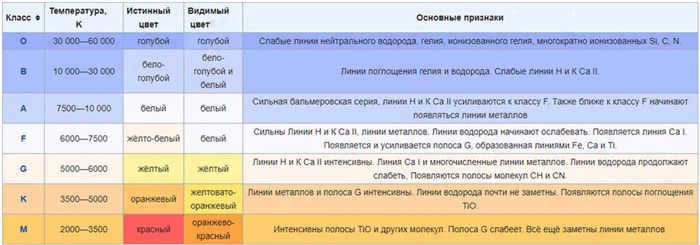

Spectral sorting of stars
What the human eye perceives
Since ancient times, human vision has remained unchanged, allowing us to perceive the number of stars in the sky without any additional sensory organs. Currently, it is estimated that there are trillions of stars in the Universe, with the majority of them only discernible with the aid of instruments.
With the naked eye, only stars with a magnitude of +7 or brighter are visible. The actual visibility depends on the observer’s visual acuity and the level of darkness in the sky. Under optimal conditions, stars with a magnitude of +8 can be seen, while in unfavorable conditions, stars with a magnitude less than +6 may be visible.
It is worth mentioning that an individual without any equipment has the ability to observe approximately 6000 stars. However, since the sky is divided into two hemispheres, each hemisphere allows for the visibility of up to 3000 stars. It is important to note that certain stars within these hemispheres may be hindered by their proximity to the horizon or obstructed by various factors such as hills, mountains, forests, and urban landscapes. Therefore, the actual number of stars that can be observed by a simple observer is limited to 2500. To minimize these interferences, observatories are constructed at high altitudes and in locations away from urban areas.
Nevertheless, even the aforementioned 2500 stars can only be seen by the observer if there is no moon or other sources of light present, including regular street lamps, during the nighttime. The presence of these light sources reduces the number of visible stars to 200.
What Can the Naked Eye See?
As previously mentioned, numerous instruments have been developed over the centuries to aid in observing the heavens, including the well-known binoculars. There are countless variations of these devices, each with their own unique features. However, even with the aid of such instruments, certain celestial objects remain hidden from view, such as clusters within the central region of our own galaxy. Furthermore, the limitations of human perception prevent us from seeing anything farther than 45.7 billion light-years away.
The brightness disparity between stars of various sizes is 100-fold. The luminosity of the atmosphere, or rather the detectability of a star with a magnitude of 10, surpasses that of a star with a magnitude of 15 by approximately 100 times.
In ancient times, the human eye had no changes in eyesight, allowing us to have the same visual capabilities as ancient Greek astronomers. By using only our naked eye, we are able to observe approximately +7 stars. The exact number of stars visible depends on various factors such as the quality of our vision, the time of day, and the level of sky illumination. In other words, without any specialized devices, we can see around 6000 stars in the night sky.
When considering factors such as hemisphere division, light pollution from cities, and the unique topography of the Earth, the human eye can typically perceive around 250 stars.
To increase the number of stars visible in the sky, one must equip their telescope with specialized equipment that utilizes simpler technology. With a high-quality telescope, it is possible to observe up to 200,000 twinkling celestial objects in the night sky. This is truly remarkable.
However, the use of advanced telescopes in scientific observatories has made it possible to observe a significantly larger number of stars in the night sky. With the aid of a powerful telescope, an average individual can now witness objects that are approximately 47.7 billion light-years away. Nevertheless, not all celestial bodies are easily visible due to our solar system’s position near the center of the galaxy, which leads to many objects being obscured by the central region of the galaxy.
Spotting every star in the sky is a challenging task. Scientific observatories equipped with high-powered telescopes are typically situated in remote mountainous areas, far from densely populated areas. The thin atmosphere and wider viewing angles in these high-altitude locations greatly enhance the visibility of celestial objects.
Generally speaking, the most recent edition of the Hubble telescope reveals that our galaxy is home to approximately 100-400 billion unique stars. It’s worth noting, however, that our galaxy is not considered to be particularly massive. Contemporary astronomers believe that this is a typical size and quantity of stars for a galaxy. There are significantly larger entities in the cosmos, such as the Magellanic Cloud galaxy.
What is the total number of stars in our solar system?
When we gaze up at the night sky, many of us may ponder over the exact count of stars in our solar system. While our imaginations may conjure up millions or even billions, the truth is that there is only one star in our solar system – the Sun. This magnificent star came into existence more than 4.5 billion years ago as a result of cosmic gases accumulating in one place and exerting varying gravitational forces. Eventually, these forces gave birth to the Sun, whose internal energy balanced out the pull of gravity.
Fascinatingly, while stars may differ in appearance and are classified accordingly, their composition remains the same. It all starts with cold molecular hydrogen under the influence of gravity.
What is the number of stars in our galaxy?
Our galaxy, known as the Milky Way, is much more than just our solar system. It is classified as a barred spiral galaxy. The diameter of the Milky Way is approximately 30,000 parsecs, equivalent to 100,000 light years. In more relatable terms, that’s about one million kilometers. The thickness of our galaxy is estimated to be around 1,000 light years.
Fascinating fact: Many stars have a preference for existing in pairs, known as binary stars. These pairs have a common center of gravity. It is also possible to find groups of three or four stars with the same center of gravity in space. Our Sun, however, is a solitary star. Just imagine how captivating it would be to witness two or three celestial dancers at dawn simultaneously!
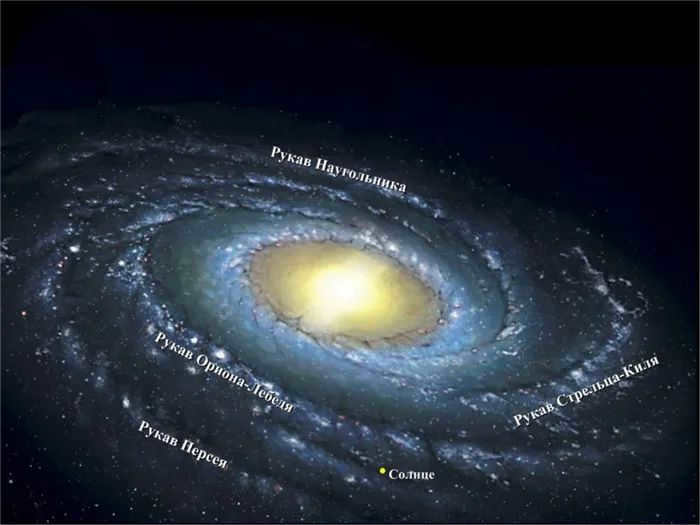
What is the total number of stars in our galaxy?
Based on recent calculations, there are approximately 200-40 billion stars in our galaxy. The majority of them are so densely packed together that they appear to be flat trays. Alongside the regular stars, our galaxy also contains between 25 and 100 billion brown dwarfs.
It is evident that there are hundreds of times more stars in our galaxy compared to the individual tablets, TVs, cars, or cell phones that people purchase and replace every two years.
However, even that is insufficient
Nevertheless, it appears that the comparison can be even more astounding. Science author David Blatner once penned a book entitled Spectra: Our Mind-boggling Universe. In his book, he stated that if you were to measure each individual molecule in just 10 drops of water, the resulting number would be equal to the number of stars in the observable part of the universe. Thus, perhaps we should inform others that we adore it more than the quantity of molecules in 10 drops of water! 😊
There exist other astonishing comparisons between the quantities of objects on Earth and in the celestial realm. According to the research article titled “Global Tree Density Map,” which was published in the journal Nature in 2015, there were approximately 3.04 trillion trees on Earth. Out of this vast number, around 1.30 trillion trees are found exclusively in tropical or subtropical forests. This implies that the number of trees on Earth is nearly ten times greater than the number of stars in our galaxy.
It was later revealed that stars do not shine evenly and are situated at varying distances from Earth. Additionally, methods beyond visual observation, such as photography and volumetric analysis, were employed to determine their size.
What is the maximum number of stars visible to the naked eye?
Scientists have the answer to this query.
In urban areas like Moscow, an individual can typically discern around 150-200 stars with the unaided eye, given clear weather conditions.
Why is the count so low? The night sky in metropolitan regions is often illuminated, resulting in a murky gray appearance rather than a pitch-black hue. Only the brightest stars, known as navigational stars, stand out against this backdrop. However, many of them are not visible. Historically, these stars were used by ships and airplanes to determine their course in the absence of modern navigation systems.
However, when you venture outside the city and into the open space, you will be able to witness a breathtaking display of up to 1,500 stars. It is important to note that the human eye can only perceive a maximum of 6,000 stars. This extraordinary phenomenon can only be observed in the vast expanse of the high desert near Ecuador, specifically when the Earth is in a half-full state.
The Brilliance of Stars.
Stars are categorized into six groups based on their brightness. The first magnitude stars shine the brightest, followed by a few stars that are slightly dimmer. In the mountainous regions, individuals with exceptionally sharp eyesight may even catch a glimpse of 8th magnitude stars! This means that instead of just 6,000 stars, they have the privilege of witnessing tens of thousands. However, it is important to note that only a fraction of these stars are visible to the naked eye.
The exact number of stars in the sky cannot be determined due to the presence of cosmic dust, which remains invisible even to the most advanced scientific instruments.

